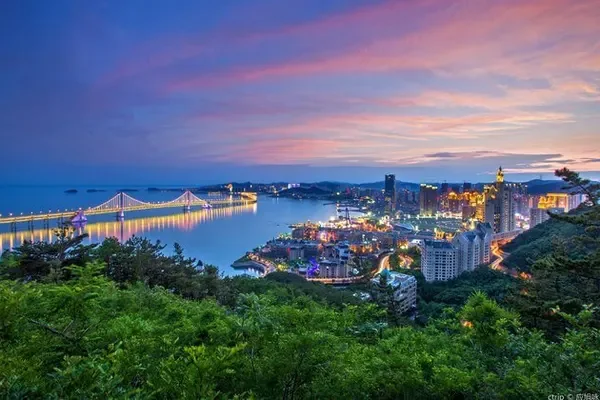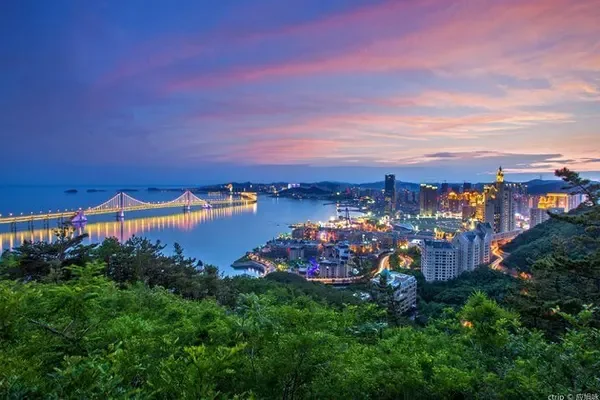Wuxiang County, at the western foot of Taihang Mountain, is located at the northernmost tip of Changzhi City, Shanxi Province, straddling between Taihang Mountain and Taiyue Mountain. During the arduous War of Resistance Against Japan, this was the long-term garrison of the General Headquarters of the Eighth Route Army and the Northern Bureau of the Central Committee of the Communist Party of China. Zhu De, Peng Dehuai, Zuo Quan, Liu Bocheng, Deng Xiaoping and other proletarian revolutionaries of the older generation fought and lived here for a long time, organizing and commanding The war of resistance in the entire North China region.

As the seat of the head of the Eighth Route Army's frontline agencies, Wuxiang is a revolutionary holy place as famous as Jinggangshan, Yan'an, and Xibaipo. On the Peace Square in the west of Wuxiang County, stands a monument with a main body height of 37.825 meters. On August 25, the Chinese Workers' and Peasants' Red Army was officially reorganized into the Eighth Route Army of the National Revolutionary Army.

No. 363 Taihang Street, across the road from Heping Square, is a large-scale revolutionary memorial hall that fully reflects the history of the Eighth Route Army's eight-year war of resistance—the Eighth Route Army Taihang Memorial Hall. The memorial hall integrates tourism and museum value, and is directly under the Shanxi Provincial Cultural Relics Bureau. It is not only a national first-class museum, but also a national AAAA-level tourist attraction.

Right in front of the memorial hall is a group of leader sculptures with the largest number of characters and the largest volume on display in China, with a length of 10m, a width of 3.5m, and a height of 3.8m. , He Long, Deng Xiaoping, Zuo Quan, a total of 11 generals of the Eighth Route Army.

The building area of the memorial hall is 54,000 square meters. The museum area is mainly divided into two parts: the main exhibition area and the tourist area. The main exhibition area includes the Exhibition Hall of Brief History of the Eighth Route Army, the Hall of Generals of the Eighth Route Army, and the Hall of Japanese Invasion Atrocities, etc.; Every day, people from all walks of life come here to review the history of the revolution and remember the revolutionary martyrs.



On the top of Fenghuang Mountain behind the memorial hall stands a monument of the Eighth Route Army - the Eighth Route Army Anti-Japanese War Monument. The body of the stele is quadrangular, covered with white marble, with eight gold-plated characters written "Monument to the Eighth Route Army Anti-Japanese War", 19.37 meters high, implying the full-scale outbreak of the Anti-Japanese War in 1937. On both sides of the stele are copper patterns engraved with grain ears and spears, symbolizing that the Eighth Route Army defeated the Japanese invaders by relying on "millet plus rifles".

During the Anti-Japanese War, Wuxiang County was only a small county with a population of 140,000, but more than 90,000 people joined various anti-Japanese groups, and more than 20,000 people gave their precious lives for the liberation of the Chinese nation. Great sacrifices and contributions have been made. On the west side of the memorial hall is the Eighth Route Army Cultural Park covering an area of 282 mu. At the same time, the Cultural Park is also the Taihang Junior Military Academy. This is a large-scale theme park that uses experiential high-tech means to reproduce the historical facts of the Eighth Route Army's Anti-Japanese War, allowing tourists to experience the combat and living atmosphere of the Eighth Route Army here. The park is divided into six sections: Eighth Route Army Cultural Square, Tourist Reception Service Center, Eighth Route Army Village, Eighth Route Army Literature and Art Club, Eighth Route Army Victory Memorial Altar, Peace Forest and Outdoor Live Theater.


On both sides of a Victory Avenue that leads directly to the memorial altar from the entrance, there are displays of tunnel warfare, mine warfare, small soldier Zhang Ga, chicken hair letter, railway guerrilla, Yanling team, five heroes of Langya Mountain, Bethune, Nie Er (March of the Volunteers), Party There are 21 groups of sculptures, such as Sons and Daughters, Celebrating Victory, Supporting the Frontline, Li Xiangyang with Two Guns, Hundred Regiments Battle, Sending His Son to the Army, Message Tree, and Red Lantern.







In Balu Village, you can appreciate the friendship between the Eighth Route Army and the people, and experience the heroic deeds of the Eighth Route Army soldiers in the Hundred-Regiment War and guerrilla warfare behind enemy lines, raid warfare, tunnel warfare, and mine warfare.










Starting at 10:00 in the morning, every hour and half hour, there will be live performances for tourists in the park at regular intervals. Red stories with revolutionary historical themes will be interpreted in the form of rap, opera, and skits, so that people can experience the hardships of the Anti-Japanese War in a more vivid plot. And the anti-war spirit of the officers and soldiers of the Eighth Route Army and the Chinese people.





As a key county of red tourism in the country, Wuxiang currently has nine red tourist attractions that have been opened. In addition to the Eighth Route Army Taihang Memorial Hall and the Eighth Route Army Cultural Park, there are also Taihang Dragon Lake, the live performance "Taihang Mountain", and Wangjiayu. The former site of the Eighth Route Army headquarters (Zhu Zhizhi Hongxing Yang Scenic Area), the former site of the Zhuanbi Hundred Regiments War Command, the Eighth Route Army Guerrilla Warfare Experience Park, Taihang Dragon Cave and Banshan Scenic Area.



Among them, Wangjiayu Village was the place where the General Headquarters of the Eighth Route Army was stationed for the longest time. This small mountain village with only a few hundred people witnessed the most senior generals of the Eighth Route Army and recorded the most legendary stories of the Eighth Route Army’s Anti-Japanese War.

Wangjiayu Village is located in a narrow valley on the south bank of the Flood River. The former site of the headquarters consists of three connected farmyards in the north of the village. The west courtyard has the reception room, the staff room, and the stables of the headquarters; the middle courtyard is the staff office of the general headquarters, the secretariat, the residence of Liu Shaoqi Road, and the residences of commander-in-chief Zhu De, deputy commander-in-chief Peng Dehuai, deputy chief of staff Zuo Quan, and guards. The east courtyard is the living room of Liu Bocheng, Deng Xiaoping, Chen Geng, Chen Xilian, Li Da and others when they return to the headquarters for meetings.








If time permits, you should also go to Zhuanbi Village, where the headquarters of the Eighth Route Army has been stationed second only to Wangjiayu Village. Various orders for the most thrilling Hundred Regiments War in the history of the Eighth Route Army's Anti-Japanese War were issued there. There are red legends everywhere in the red Wuxiang.

![[Traveling] Take the only cableway in China that can turn, tour the Taihang Canyon, and enjoy the forsythia flowers](https://www.anyonetrip.com/uploads/202302/02/41fca91e88522cb3.webp)
